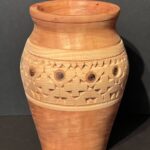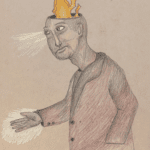Since I was a kid, I loved rocks
As long as I can remember, I have always loved rocks. I love the feel of small rocks that you can hold in your hand, the rocks that make up mountains and the especially the big rock that is our planet Earth. It is truly our “Mother”. This blog post is a meditation on rocks and time… geologic time, and our place within it.
Many years ago, as a means to deal with anxiety, I carried a small rock in my pocket. This at a time while in medical school when I first learned meditation exercises. It was also the time when we medical students left the classrooms and laboratories to enter the hospital and begin to care for patients. It was a radical change from so many years of academic study. All of us were inexperienced and the patients were very ill. Of course we were supervised but the pressure from within ourselves and from our supervising physicians to do a good job was high.
It produced anxiety.
Needing to feel “grounded” in this strange and scary world, I somehow got the idea of putting a small rock in my pant pocket. Since I had frequently used the image of a rock in my morning meditations, holding this rock for a few seconds brought back that quiet meditative state. Perhaps I needed something physical because my focus had moved from the world of books towards caring for an actual living person. The stakes were high.
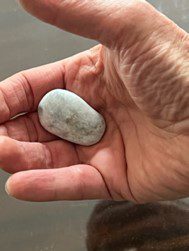
One of my favorite books is a small book called Zen Rocks and Waters by Frederic Spielberg. It contains visual and graphic art picturing rocks and water to illustrate some ideas of Zen Buddhism. The author writes of “isness”, a kind of Zen word for Being.
He says: “Big rocks are made of small rocks. Some people are hit by the secret of isness when looking at a grain of sand, others while looking at the vast Himalayas. The points where we are most accessible to it vary greatly…”
That sense of “isness” has, for me, something to do with life and death. “Life and death” is always either in the foreground or background in the practice of medicine and a moral development. We are more similar than different from our ancient ancestors.
It seems to me that practicing meditation is a small but necessary step in the need to move our minds and hearts to another level. That is a level commensurate with the physical powers we have developed. Meditation, which uses parts of our brains that remain often undeveloped is a way of developing those parts. Finding helpful models and metaphors comes via art and science in so many forms. Meditation is the practice for the art of living.
I would like to share such a meditation with rocks to the vastness of geologic time and the future of humanity. It might be bit of each, but see for yourself.
A Scientific Meditation
“… rocks are not nouns but verbs – visible evidence of processes: a volcanic eruption, the accretion of a coral reef, the growth of a mountain belt. Everywhere one looks, rocks bear witness to events that unfolded over long stretches of time.”
In the spirit that all things are “in process” but I can’t perceive this through my senses, I try to add “time” into my perception as a way to see the greater context of daily life. I particularly like to use scientific facts in these meditations. It is a way of deepening awareness consistent with what I have learned. Sometimes, as illustrated by seeing rocks as verbs, not nouns, this involves looking at the processes that led up to the present. I do it as best as I can. It is a bit like “seeing” history… the events and so on that led up to the present. In adding the time dimension to the visual dimension this might be likened to an imaginary time lapse movie.
Overall, it is a use of the imagination not fantasize but to be more aware of the depth and richness of reality.
New Mexico Meditation
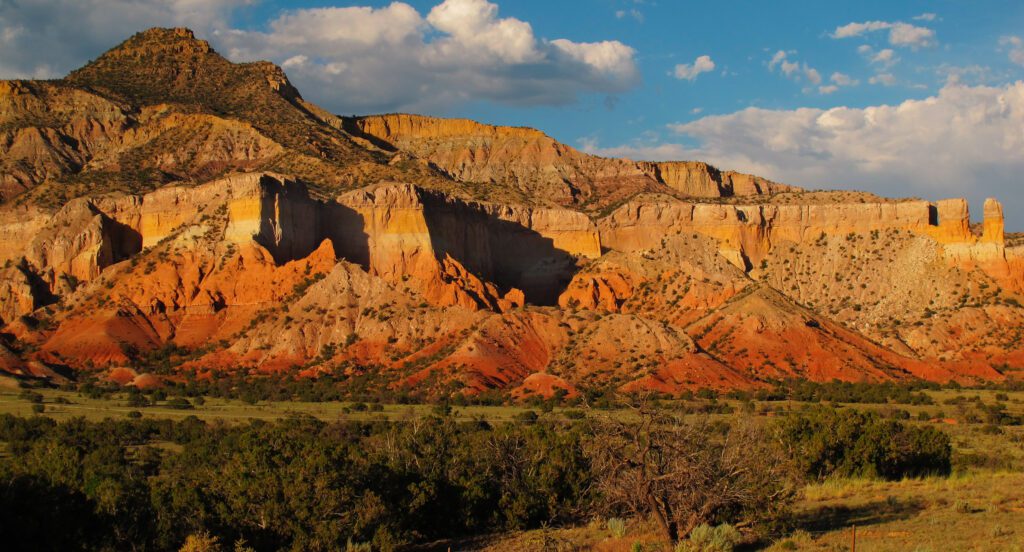
As I drive west on Route 84 in New Mexico from Santa Fe to Ghost Ranch, the landscape changes. Once past Abiqui it has the vaguely familiar feeling of a Georgia O’Keefe painting. This is where she lived and painted for much of her life. A sacred silence fills the land and sky. The large masses of rock, different colors, shapes and textures reveal the power of the earth before humans.
200 million years of time
What I see is more than 200 million years of time, from the late Triassic geologic period (between 205 and 228 million years ago) at the base, brick-red to red siltstone and mudstone and white to tan sandstone deposited by ancient rivers. Outside the Ghost Ranch library is a display of the different layers of rock and the geologic periods and times to which they belong. The display indicates how old these layers are.
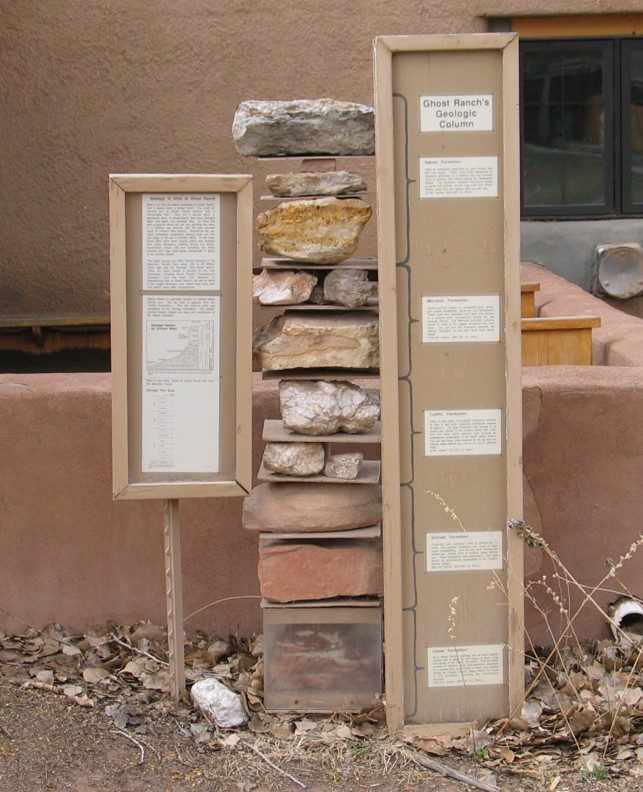
Such time spans are difficult for me to imagine. In a way, they are just large numbers. Consider, for the Jurassic rocks formed between 205 and 228 million years ago. That is a 23 million year time span, an unbelievably vast span of time, When is the number written down, it just seems like a few marks on the page. Is it possible to get a glimmer of this vastness?
Trying to get handle on this, I scale things down to something more manageable. I use this more manageable model in my meditation as I look more deeply at landscape around me.
It becomes an exercise of expanding awareness. I shrink into that vastness.
A Very Short History of All that Is
The age of the universe is dated as 13.7 billion years. It began with the “Big Bang” The sun formed 4.57 billion years ago. Our planet dates 4.54 billion years. As I remember, I realize that I am observing a landscape which, though millions of years old it is relatively young. As ancient as these rocks appear, they have been present form for only 5% of the earth’s life span.
The earliest life, in the form of cells has been determined to be 3.8 billion years ago. That was long before these rocks were present.
At the time of these rocks, dinosaurs lived at Ghost Ranch. Many remains of dinosaurs and fossils have been found there. Dinosaurs lived between about 245 and 66 million years ago, in a time known as the Mesozoic Era. Our more direct ancestors, mammals, appeared around this time, 200 million years ago.
Humans that looked like us appeared 200,000 years ago
The earliest members of the species homo, from which homo sapiens descended, were in evidence 2.5 million years ago. Humans that looked like us appeared 200,000 years ago, long after the rocks at Ghost Ranch were in place. Neanderthals disappeared 25,000 years ago.
Most of what we think of as the ancient times occurred in the past 10,000 years. Indeed, if we did a little time compression and imagined that these New Mexico rocks were present 1 million years ago (still an unimaginably long time ago), instead of 200 million years ago, we would then have the human race of recorded history (the last 10,000 years) only in the past 50 years. The last 2000 years would only be 10 years and the discovery of the electricity that has transformed the world we take for granted, has been present for only the past 6 months.
Meditation – using another way of thinking about time
An easier way to visualize these relative time spans is to imagine a long highway where one foot is equal to one year.
The last century would be the closest 100 feet of road. The last 10,000 years would be approximately 2 miles down the road. By that measure, homo sapiens would have been around the past 40 miles of road. Dinosaurs, who died out 65 million years ago, would back 13,000 miles. The rocks at the base of Ghost Ranch would have been formed 40,000 miles down the road. The planet earth, our home formed some 1.5 million miles down the road.
This scale of time is beyond our usual awareness but it can help us to visualize it as distance down a road. We have probably all taken long car trips and it is easier to imagine space than time.
Of course, realizing we may, at best go along for 100 feet on this road may give the feeling of how short our lifespans really is. On the other hand the recognition of the vast scope of history of which we are a part reveals a grandeur, a magnificence and the mystery that frames our lives. It leads me to reverence and wonder.
This meditation also shows me that homo sapiens, our species of human beings is a young species, relative newcomers in existence. We are part of Being, including vaster processes than we can even imagine. I glimpse this when I recognize that it has only been “500 feet down the road” since we humans figured out that the earth went around the sun rather than vice versa. It has only been “150 feet down the road” that the notion of evolution and natural selection was discovered.
The visionary architect, Paolo Soleri, who lived and worked in the geologically rich Arizona desert once said:
“As the end of a process, man is absurd. As the beginning of a process, man might be hopeless, desperate, but never absurd. We stand where the magnetic field is just beginning to orient each particle (monad). The total pattern is far off in the future but the magnet is operative and the particles will orient themselves. In reality the magnet (which stands as God) is itself self-constructing. The force field is not just undefined but also highly improbable, not absurd, just inconceivable.”
Such a long view is a helpful counter to the daily news which is generally experienced with minimal context. It helps me to see and discover better . It connects me to generations past and future.
Meditation in this way teaches me to transcend myself. This transcendence leads to a sense of union with all that has been, all that is, and all that will be.
Meditation and the Future of Humanity
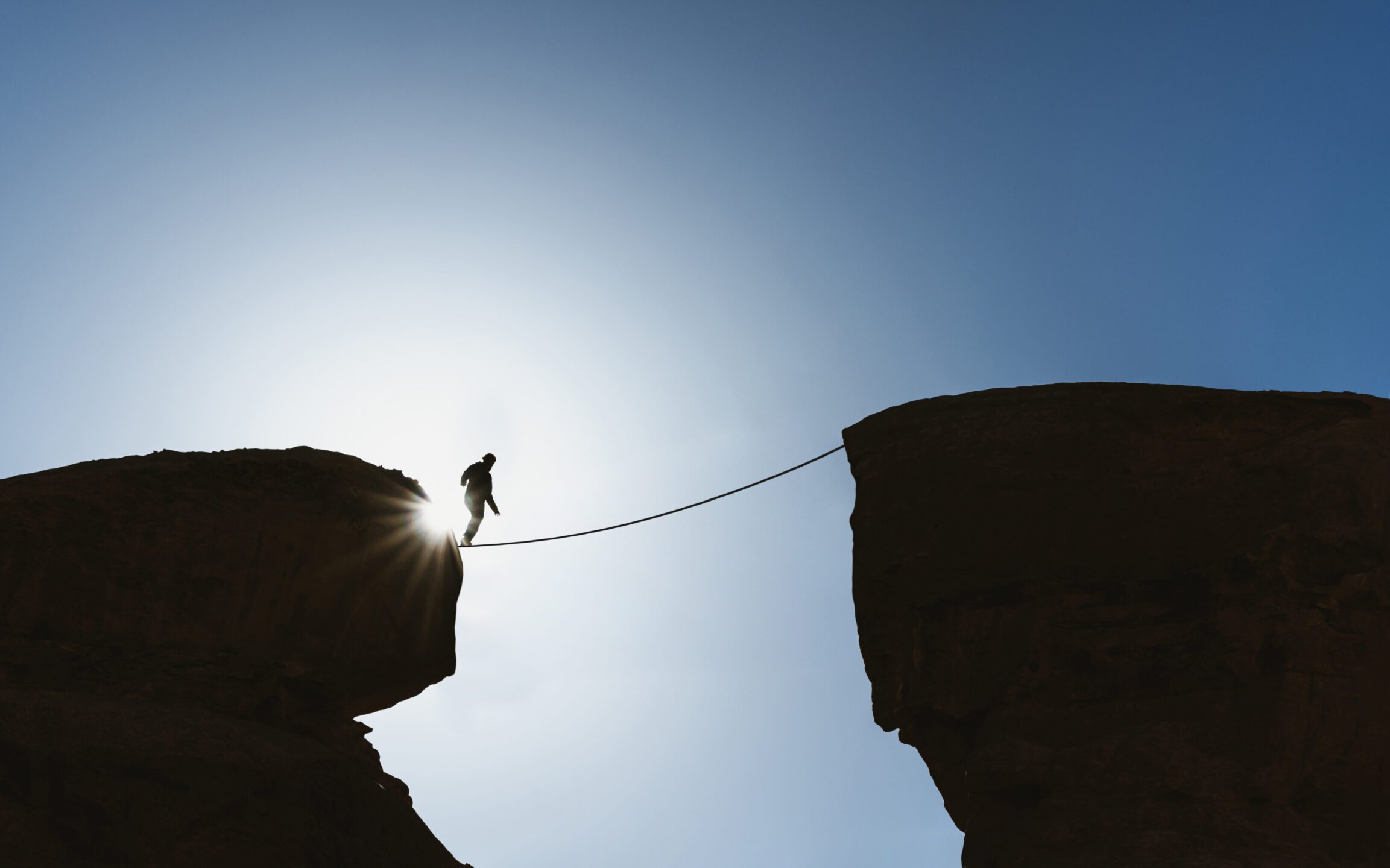
“Mammalian species survive for around one million years before they go extinct, Home erectus survived for almost two million. If we think of one million years in terms of a single, eighty-year life, then humanity is in its adolescence. Just sixteen years old; just coming into our power; just old enough to get ourselves in serious trouble.”
- Toby Ord, The Precipice: Existential Threat and the Future of Humanity
In this book Ord outlines many of the existential risks facing humanity. These include natural risks such asteroids and supervolcanic eruptions, manmade risks such as nuclear weapons, climate change and environmental damage. Pandemics and artificial intelligence also make the list. His approach, despite these dangers, is full of hope for humanity to make it through its “adolescence”. He calls the time we are living now the “precipice”. While a precipice is a very steep rock or cliff, it also means nearness to a “bad or dangerous situation.”
Thinking of humanity as being in its adolescence helps me. The power, brought about by technological advances we now take for granted, has yet to match similar advances in wisdom. And even more so, ways of relating to each other and the natural world. I think that this is my work. I relate meditation as a means of thinking an important part of this.
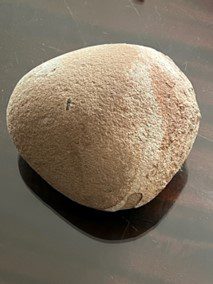
Lately, I have placed a rock which is the shape and size of the human heart on my desk. I picked it up when we lived for a short time in Gallup, New Mexico. It is about a million years old.
I use it to remember the vast time in which we live.
Its heart shape also reminds me of the mystery of the unfathomable “human heart”.
It grounds me.
References:
Frederic Spiegelberg, Zen Rocks and Waters. Pantheon Books. 1961
Marcia Bjornerud, Timefulness – How Thinking Like a Geologist Can Help Save the World, Princeton University Press 2018
Paolo Soleri, The Bridge Between Matter and Spirit is Matter Becoming Spirit. Anchor Books Edition, copyright 1973 Cosanti Foundation, p. 246.
Toby Ord, The Precipice: Existential Threat and the Future of Humanity. Bloomsbury Publishing 2020.
About the Author(s)
Bob Magrisso is a physician and long-time meditator. He tries to practice “applied spirituality”.

